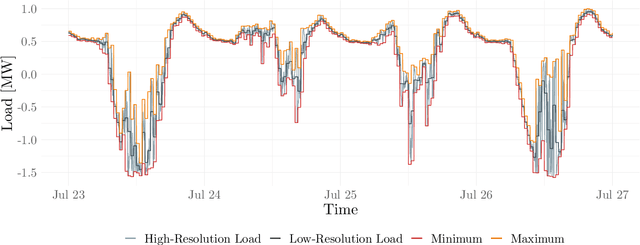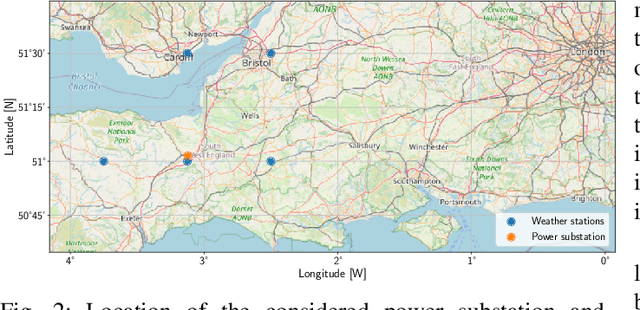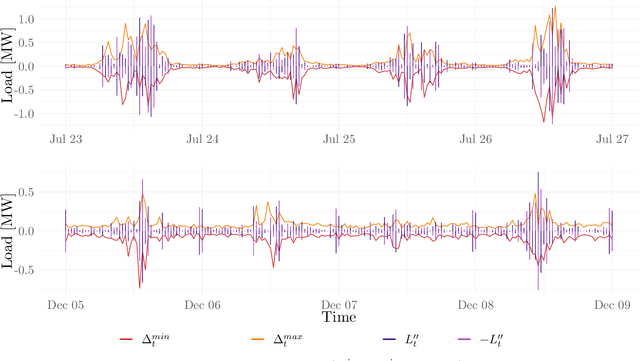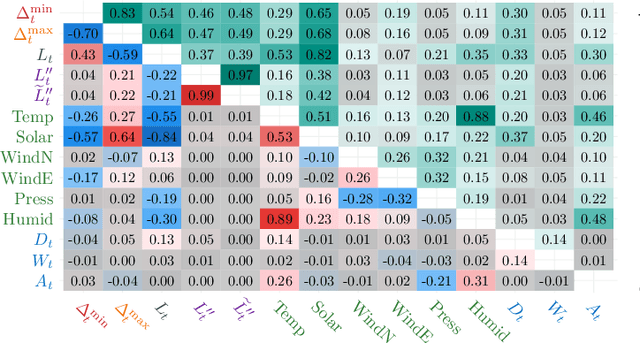Jonathan Berrisch
Multivariate Probabilistic CRPS Learning with an Application to Day-Ahead Electricity Prices
Mar 17, 2023



Abstract:This paper presents a new method for combining (or aggregating or ensembling) multivariate probabilistic forecasts, taking into account dependencies between quantiles and covariates through a smoothing procedure that allows for online learning. Two smoothing methods are discussed: dimensionality reduction using Basis matrices and penalized smoothing. The new online learning algorithm generalizes the standard CRPS learning framework into multivariate dimensions. It is based on Bernstein Online Aggregation (BOA) and yields optimal asymptotic learning properties. We provide an in-depth discussion on possible extensions of the algorithm and several nested cases related to the existing literature on online forecast combination. The methodology is applied to forecasting day-ahead electricity prices, which are 24-dimensional distributional forecasts. The proposed method yields significant improvements over uniform combination in terms of continuous ranked probability score (CRPS). We discuss the temporal evolution of the weights and hyperparameters and present the results of reduced versions of the preferred model. A fast C++ implementation of all discussed methods is provided in the R-Package profoc.
Modeling Volatility and Dependence of European Carbon and Energy Prices
Aug 30, 2022



Abstract:We study the prices of European Emission Allowances (EUA), whereby we analyze their uncertainty and dependencies on related energy markets. We propose a probabilistic multivariate conditional time series model that exploits key characteristics of the data. The forecasting performance of the proposed model and various competing models is evaluated in an extensive rolling window forecasting study, covering almost two years out-of-sample. Thereby, we forecast 30-steps ahead. The accuracy of the multivariate probabilistic forecasts is assessed by the energy score. We discuss our findings focusing on volatility spillovers and time-varying correlations, also in view of the Russian invasion of Ukraine.
High-Resolution Peak Demand Estimation Using Generalized Additive Models and Deep Neural Networks
Mar 07, 2022



Abstract:This paper presents a method for estimating high-resolution electricity peak demand given lower resolution data. The technique won a data competition organized by the British distribution network operator Western Power Distribution. The exercise was to estimate the minimum and maximum load values in a single substation in a one-minute resolution as precisely as possible. In contrast, the data was given in half-hourly and hourly resolutions. The winning method combines generalized additive models (GAM) and deep artificial neural networks (DNN) which are popular in load forecasting. We provide an extensive analysis of the prediction models, including the importance of input parameters with a focus on load, weather, and seasonal effects. In addition, we provide a rigorous evaluation study that goes beyond the competition frame to analyze the robustness. The results show that the proposed methods are superior, not only in the single competition month but also in the meaningful evaluation study.
CRPS Learning
Feb 01, 2021



Abstract:Combination and aggregation techniques can improve forecast accuracy substantially. This also holds for probabilistic forecasting methods where full predictive distributions are combined. There are several time-varying and adaptive weighting schemes like Bayesian model averaging (BMA). However, the performance of different forecasters may vary not only over time but also in parts of the distribution. So one may be more accurate in the center of the distributions, and other ones perform better in predicting the distribution's tails. Consequently, we introduce a new weighting procedure that considers both varying performance across time and the distribution. We discuss pointwise online aggregation algorithms that optimize with respect to the continuous ranked probability score (CRPS). After analyzing the theoretical properties of a fully adaptive Bernstein online aggregation (BOA) method, we introduce smoothing procedures for pointwise CRPS learning. The properties are confirmed and discussed using simulation studies. Additionally, we illustrate the performance in a forecasting study for carbon markets. In detail, we predict the distribution of European emission allowance prices.
 Add to Chrome
Add to Chrome Add to Firefox
Add to Firefox Add to Edge
Add to Edge